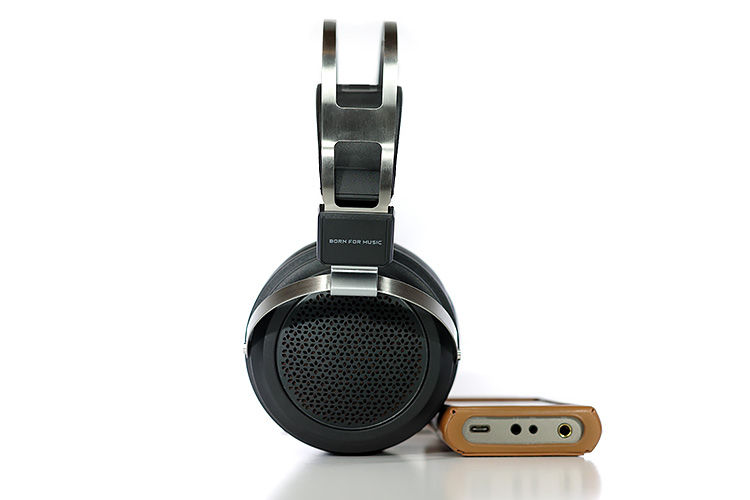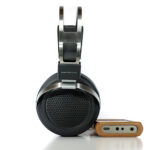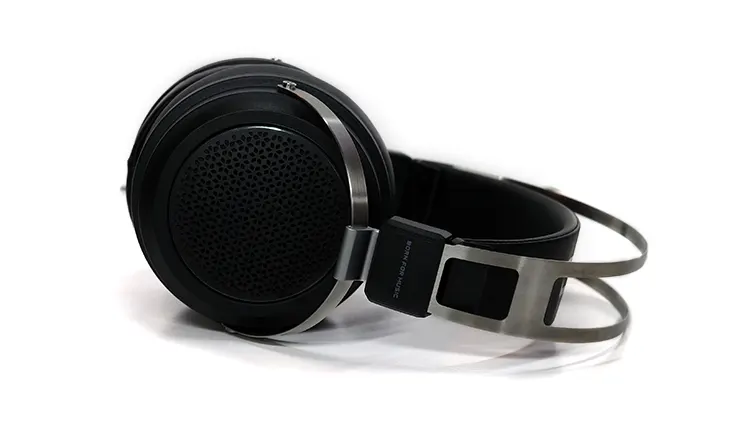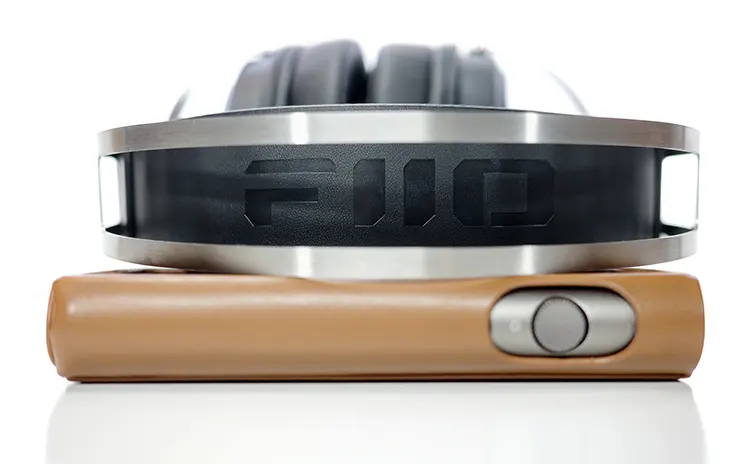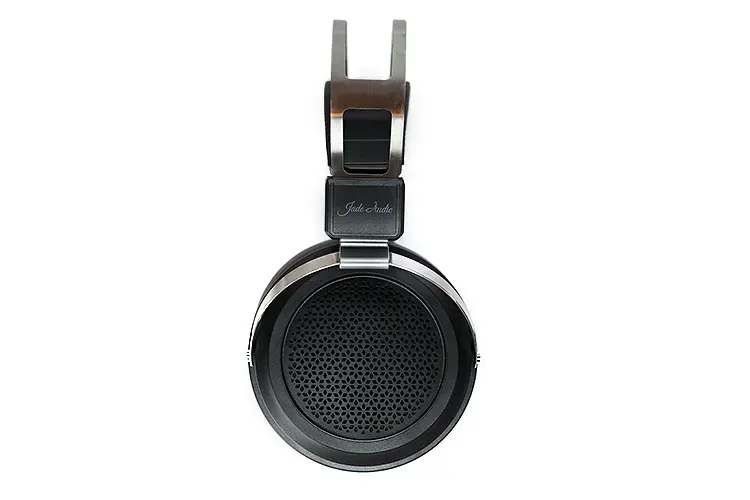Today, Lynn reviews the FiiO JT1, which is an affordable set of closed-back headphones equipped with an efficient 32Ω rated 50mm dynamic driver. It is priced at $69.99.
Disclaimer: This was sent to me as a sample in exchange for my honest opinion. Headfonics is an independent website with no affiliate links or services. I thank FiiO for its support.
You can click here to learn more about the FiiO audio products we have previously assessed on Headfonics.
Note, that this post follows our current scoring guidelines which you can read in more detail here.
FiiO recently laid out its plan for 2024 with several new products across the board, including products from their subsidiary, Jade Audio. The JT1 and JD1 are two recent headphones and IEM entries that follow that “new” FiiO plan.
Coming off the K9 AKM review, the JT1 provides a refreshing look at a very affordable set of closed-back headphones.
Meant to cater to those looking for a simple, straightforward headphone, the JT1 can also be used across many listening options. With build quality on par with other FiiO products, we are off to a good start.
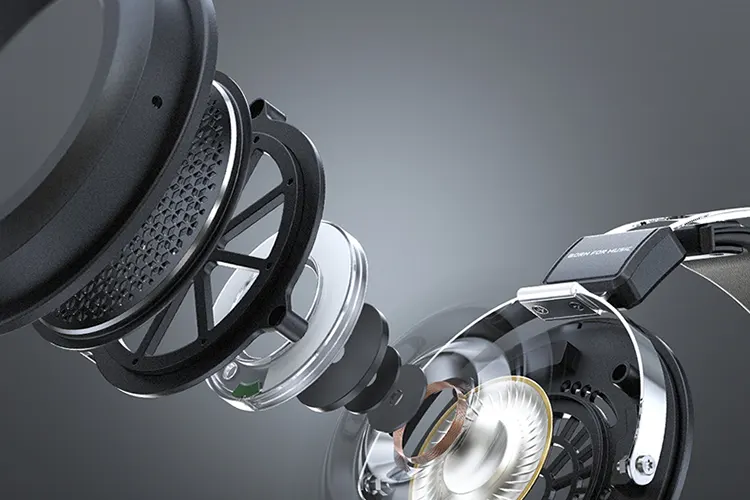
Tech Highlights
The JT1 employs a 32Ω rated 50mm dynamic driver, based around a PEK+PU+aluminum polymer diaphragm purportedly for low distortion characteristics, and uses a brass gasket for quicker musical responses.
The JT1 is equipped with high-performance N52 magnets, and a high-tension CCAW voice coil, which when combined with the polymer driver diaphragm purportedly achieves a natural and accurate sound. The average 32Ω impedance means the JT1 is also fairly easy to drive.
An OFC copper cable with an inline mic gives the JT1 a slightly warmer presentation.
Design
The JT1 is a closed-back over-ear headphones developed with the help of listeners and influencers according to Vincent from FiiO. Looking at many of the current offerings, the focus quickly became a user-friendly and cost-efficient design.
There is a good amount of plastic to the design, highlighted by an aluminum yoke leading to a non-adjustable stanchion. Instead of an adjustable stanchion, FiiO uses a two-cabled spring-tensioned setup on the inner headband.
Even while wearing a hat, the inner pleather-covered aluminum “sheet” never contacted the outer band. That band is made of a two-rail flat, stiff aluminum material, which keeps its shape nicely.
The silver/chrome accents carry over to the outer cup surrounds, highlighted by a mesh-patterned backplate, giving the JT1 an elegant, understated look. Vent holes on top of the cup allow for the release of pressure when putting the Jade on, which is good since the ear pads compress readily.
Those cups are easily detachable, using the “old school” slot behind the pad mounting system. This means you could easily change pads to another if you desire, instead of the plastic button-type earpad you might usually find at this level.
At 353 grams, approximately, the JT1 feels light and maneuverable, without feeling cheap. Quality materials help with the feel and look, aided by the lighter weight of the unit.
Comfort
The fit is very comfortable with the cups enveloping my average-sized ears. I found the pads never contacted my ears. I do wish for a bit tighter clamp pressure, though. The spring-loaded inner band would still be quite functional with a tighter clamping pressure.
The inner band mentioned above helps keep pressure off the top of your head, and I found the fit benefitted from this suspension setup, never stressing either the inner or outer band.
Stock cable
The detachable TRS cable is fabric-covered in a tight wind, lending to some microphonics above the Y-splitter.
I could hear the noise in the cups when moving my head, which was a bit of a letdown. Each 3.5mm jack carries the requisite color scheme for left and right, blue, and red respectively.
I did feel the need to insert the jack with a bit more force, after using it once and finding out it had come a bit loose. A tighter connection might be wanted.
The right cable above the splitter carries the microphone, with a single control for play/pause and answer/end for phone calls. I found the button worked well, with minimal delay and restart.
The 1.5m (approximate) length is oriented towards portability, and a bit short for use at your desktop if you are up and about a bit. For my purposes, I had no issues when connected to my two-channel desktop system.
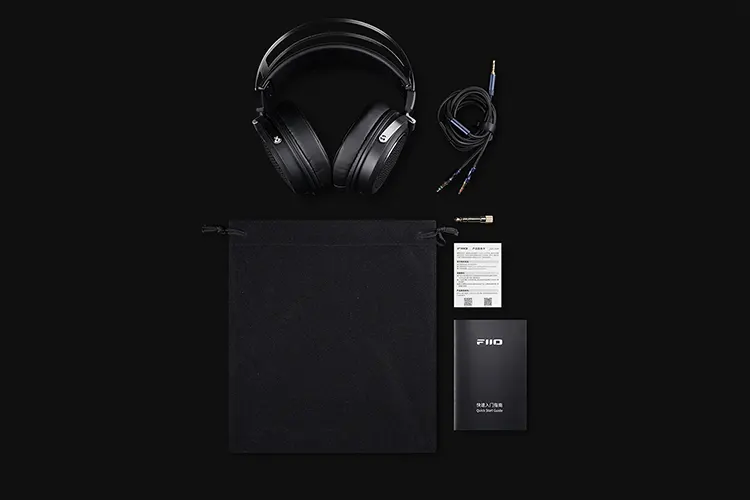
Packaging & Accessories
To keep at a price point, one needs to juggle necessities. The FiiO Jade Audio JT1 pretty much nailed the accessories, keeping with that theme.
Included is the headphone, and a felt pouch big enough to protect the unit when taking it with you. Think of your favorite fleece blanket, and you get the measure of how the pouch feels and works.
Also included is a 6.35mm jack for use with the 3.5mm cable and a quick guide along with a detailed warranty booklet. A simple and straightforward package.
Sound Impressions
Listening was done on a MacBook Pro, Shanling M6 Pro, and a Yamaha A-S301 through a Sony PlayStation 1 (SCPH1001) CD player.
Also used was a We Are Rewind portable cassette deck for comparative purposes. Streaming through Tidal, Qobuz, physical cassette, and CD music was used.
Summary
An elevated bottom end drops into the mids, smoothly until about 650hz, making bass the highlight, running deep, but cooling off at that break. Elevated mids carry the signature forward with a peak at roughly 6kHz, dropping off again and eventually quite steeply at roughly 13kHz.
As a result, sub-bass is defined but also sounds boomy. The dip allows very little bleed into the midsection, where the building of notes carries slightly forward, but not in a punchy way, instead rather smoothly.
Treble notes carry energy, but the rounding of notes gives the signature a lack of true sparkle in keeping with the warmer signature.
A wide soundstage helps to space notes across the setting but with less depth and height. Out-of-head experiences do occur but seem a bit flattened when only looking at the stage.
Bass
The sub-bass carries a nice slightly elevated shelf to it, which also comes across as fairly smooth. There is certainly a preponderance of bass quantity down low, which without the dip at 650hz would make for a boomier bass quality.
Taming the upper bass helps to alleviate this response, and there is a decent thump to the low end as a result.
I did find on distorted recordings, that the bass lost much of its coherence, sounding like a jumbled mess. I attribute this to the poor recording more than the JT1’s ability to render the low-end.
When asked, such as when an upright bass is laying down the foundation, the depth of the bass helps to hold the signature together, with little to no bleed into the mids.
To me, this is as much about attack and decay being nearly equal, with both elongated. Thicker note weight gives that depth, but not as controlled as it might be with tighter attack and decay; and not quite as thick as it could be.
Mids
Building up in a fairly linear fashion, the lower mids tend to sound withdrawn and held back. Seemingly pushed to the back, but still present, the notes in this region take a back seat to the rest of the show.
The smooth character holds over until a slight dip around 5kHz, which adds a thickness to the notes, which isn’t as clean as a smoother response would be.
A fairly accurate signature, that is meant to be smooth with decent detail would be how I would describe this part of the frequency response.
I wish for better detail retrieval, but do not lament it for the smoother, richer character comes through. As a result, there is a lack of edge to the notes, and clarity suffers a bit.
Vocal songs tend to sound a bit smoothed out due to the tuning, but for pieces, which tend to be more laid-back this is an adequate result.
Male vocals sound smooth, while female vocals can be too smooth. The result is a somewhat natural, organic sound emanating from the mids, but lacking the bite of a finely tuned section; which would benefit the overall clarity.
Treble
Smooth and rounded, giving a natural extension from the mids, the treble peaks at about 6kHz, then dips at the 9kHz mark, before rising and then dropping drastically beyond 10kHz.
That rounded character lends itself to that natural, organic extension, but without the sparkle some would desire.
A signature oriented for a casual sound has been thrown around by some for the JT1, and I would concur; adding that there is a lack of upper-end reach due to the rounding.
This makes for a less distinct amount of detail, adding to the smoother character. While details do suffer, the smooth character in the upper end complements the two other FR areas nicely.
It would be one thing to make the treble notes more distinct, but you would probably lose cohesiveness in the overall more natural signature; which caters to the masses. Safe tuning here adds to the laid-back nature of the JT1, which seems to be wanted by many.
Staging & Imaging
Wider than taller and deeper, the soundstage presents the user with a widescreen approach instead.
This allows the placing of instruments to be accurately determined across the linear plane, but with less definition than others might be. That lack of overall clarity plays here, giving the notes room, but almost in concert together as opposed to succinct placing.
Imaging is quite good for a closed-back headphone at this level due to the width mentioned, but a lack of accuracy is the result, due to the elongated note texture. That organic character comes through, which all may not like. Jazz ensembles do sound especially good with this tuning, though.
Click on page 2 below for my recommended pairings and selected comparisons.

